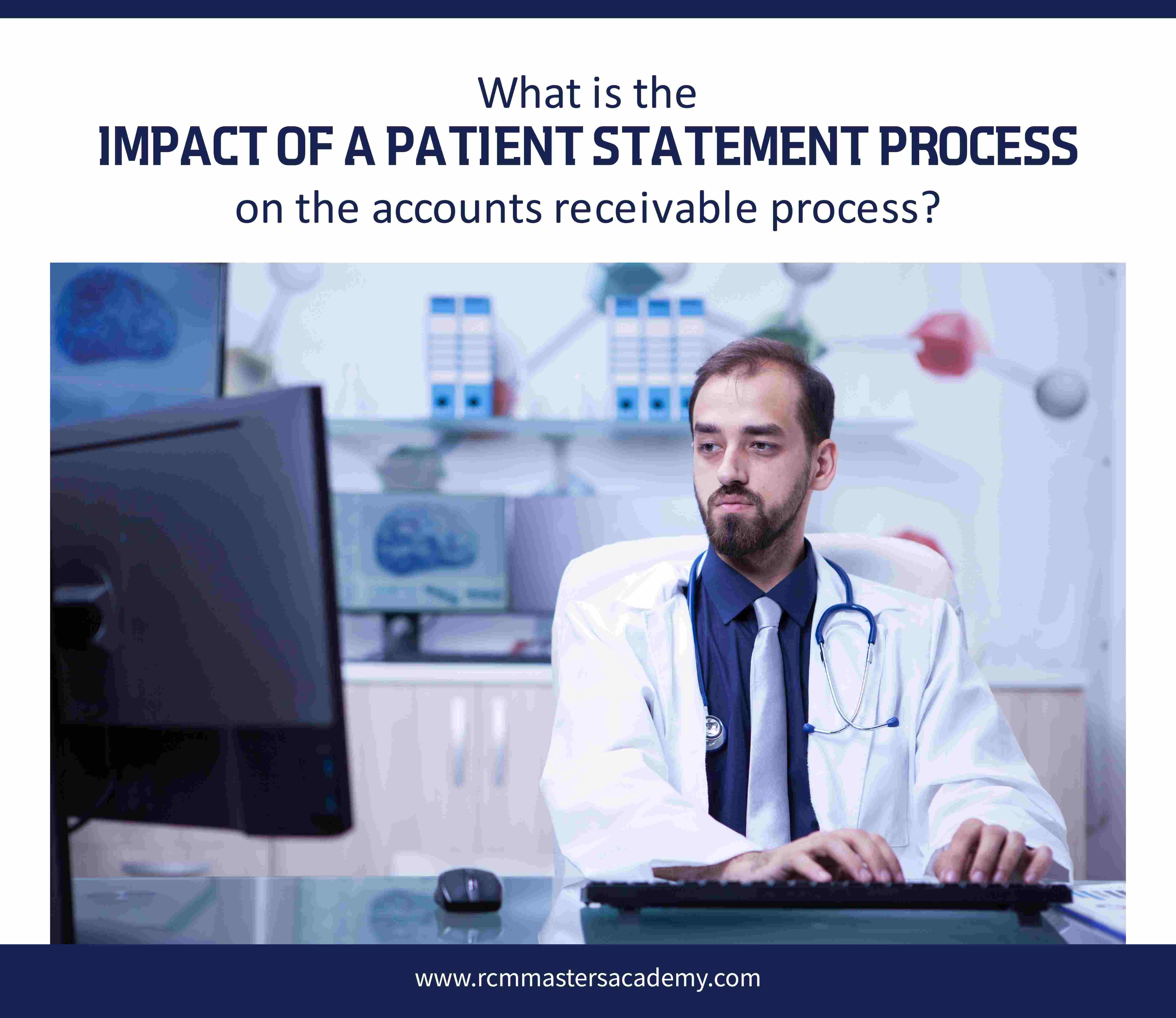 info@rcmmastersacademy.com
info@rcmmastersacademy.com

The patient statement process is an essential component of the healthcare revenue cycle, which includes all the activities that a healthcare provider performs to receive payment for the services rendered to patients. The patient statement process involves sending bills or statements to patients, summarizing the healthcare services provided to them, and the amount they owe for those services. The patient statement process has a significant impact on the accounts receivable process, which is the process of tracking and collecting outstanding payments from patients and insurance companies.
One of the primary impacts of the patient statement process on the accounts receivable process is that it improves the overall cash flow of healthcare providers. When patients receive accurate and timely statements of their healthcare services and the amount owed, they are more likely to pay their bills promptly. This, in turn, reduces the amount of outstanding accounts receivable and improves the financial health of the healthcare provider.
Moreover, the patient statement process can help healthcare providers identify and address billing errors, such as incorrect billing codes or missing information. This can prevent denials and rejections by insurance companies, reducing the need for time-consuming and costly appeals. By minimizing billing errors and streamlining the billing process, the patient statement process can help reduce the overall workload of the accounts receivable team.
Another significant impact of the patient statement process on the accounts receivable process is that it can enhance patient satisfaction. Patients who receive clear and concise statements of their healthcare services and bills are more likely to have a positive experience with their healthcare providers. This can improve patient retention and loyalty, as well as attract new patients to the practice.
Additionally, the patient statement process can improve the accuracy and efficiency of the accounts receivable process. By providing patients with detailed statements of their healthcare services and bills, healthcare providers can reduce the number of billing inquiries and disputes, reducing the workload of the accounts receivable team. Moreover, the patient statement process can help healthcare providers identify and address overdue payments promptly, reducing the risk of bad debt write-offs.
Finally, the patient statement process can improve the compliance of healthcare providers with regulatory requirements. Healthcare providers are required to provide patients with accurate and timely statements of their healthcare services and bills, as mandated by federal and state regulations. By ensuring compliance with these regulations, healthcare providers can avoid penalties and legal disputes, reducing the overall risk to their financial health.
In conclusion, the patient statement process has a significant impact on the accounts receivable process of healthcare providers. By improving cash flow, reducing billing errors, enhancing patient satisfaction, improving efficiency and compliance, the patient statement process can help healthcare providers optimize their revenue cycle management. Effective patient statement processes are essential for healthcare providers to maintain a healthy financial position and provide high-quality patient care.
You can enroll for our Online Medical Billing Training here: